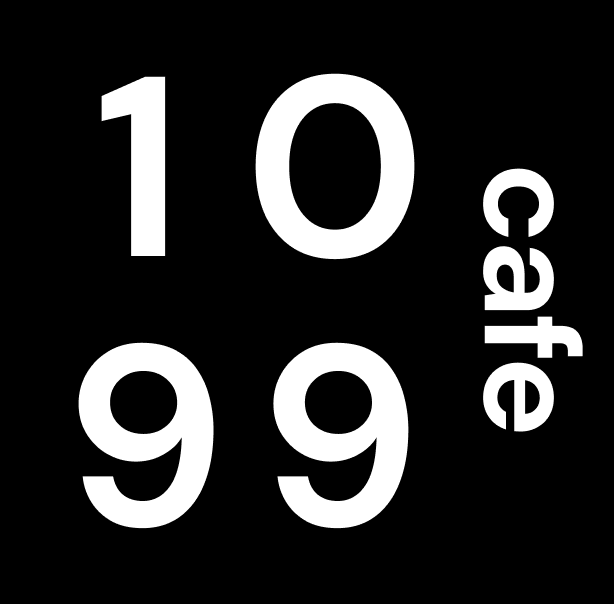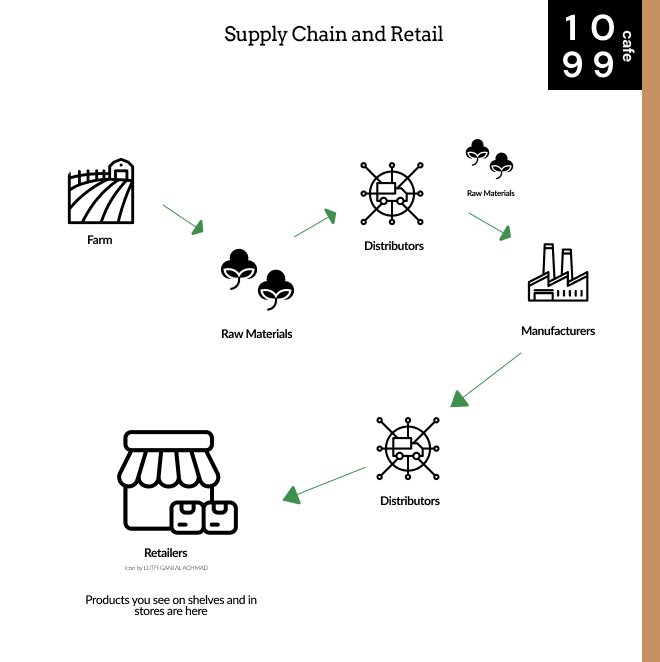Meaning of Retail Price | A Definitive Guide
As a freelancer or entrepreneur, you may be wondering what the meaning of retail price is as you think about building out your practice or business. Today, we’ll define what retail price means in business and give some solid examples.
Meaning of Retail Price: How is it Defined?
Retail Price (noun) - the price an end-user pays for a product or service. For example, the price of an iPhone is a retail price.
At 1099 Cafe, we would define retail price simply as the price that the final user of a product or service pays for that product or service. For everyday consumers, that’s basically just the price of anything they buy. But for those in business, there may be different stages in the supply chain that have different price tags.
Why Retail Price Matters: An In-depth Explanation:
To consumers, it might not make much sense that there are other prices for goods and services. What does that mean? To put it simply, in every business, there is a supply chain that exists in order to deliver the final goods or services to the customer.
What is a Supply Chain?
A supply chain is the process a good/product has to go through in order to become its final form. For example, if the good/product is a hat, someone (usually a company) has to source the raw materials (polyester, cotton, etc.), and someone else has to perform the labor of sewing/putting the hat together. Finally, another party takes on the job of selling the hat in a store. These 3 parts are all part of the supply chain of a single product: a hat.
Another example, if you buy a t-shirt made of cotton, some factory somewhere had to source the:
Raw materials: cotton
Processing labor: processing and sewing the cotton into fabric
Sales Labor: labor associated with getting those t-shirts into stores
As you can see, something as simple as a T-shirt has a convoluted process and there are costs associated with each of these steps. Even though as a consumer you may only see the retail price, businesses have to manage their supply chain and pay for manufacturing and labor costs before a product becomes final.
What is Retail, or a Retailer?
A retailer is a specific part of the supply chain. Generally, the term “retail” describes products being sold to consumers, or end-users. Thus, “retailers” are stores, or companies, that sell to consumers and end-users. Their jobs are to specifically act as a store front that has expertise, strong branding, or a strong sales team that appeals to consumers.
Why does this type of relationship exist? Why don’t manufacturers just sell to consumers?
Most manufacturers (factories), or businesses that create things, don’t want to make an effort to market and worry about how their products will be sold. Instead, manufacturers sell their products to retailers so that retailers can focus on selling to consumers. Manufacturers want to focus on streamlining and optimizing their factory production processes and cut costs in order to find the perfect balance of output and minimal costs. Similarly, by selling to distributors, manufacturers can move a lot of volume, versus selling to individuals.
The pursuit of selling to individuals requires many hours of training, analysis, and specialized skills–you could argue that factories just don’t have the time to worry about consumer sales and marketing.
So, what are distributors then?
Distributors are just another added layer in the supply chain. Instead of a factory selling directly to a retailer, they may sell to a distributor. The distributor THEN sells to retailers. So, think of distributors as buyers in the business-to-business space. A distributor can also act as an agent to acquire materials that manufacturers need. Distributors bring value through their ability to bring together individuals and businesses across the supply chain.
For example, if you run a factory that manufactures premium, high-quality clothing, you may work with a distributor on both the buying and selling side. You might work with a distributor in order to buy high thread count Egyptian cotton, because the distributor has a strong network in the textile industry and is able to source premium cotton much better than you could, as a factory manager.
Similarly, after you process the cotton and manufacture it into a shirt, you may sell it to another distributor who then helps you sell that product to retailers that carry it in stores. As a factory manager, you may not want to understand and focus on marketing/selling to consumers. Instead, you just sell it to a distributor and become hands off and focus on your factory instead.
How does the complete supply chain look?
A complete supply chain can look something like this:
Manufacturer Suggested Retail Price: What does it mean?
You may have heard of a Manufacturer Suggested Retail Price, or MSRP. This is often seen on car stickers and means nothing more than what manufacturers (companies that physically create the product) suggest the product be sold for. Historically, it has sort of acted as a baseline price for consumers to negotiate down from–although more recently the auto industry has been off the rails. In fact, many cars have been selling for more than MSRP, but this is an exception.
A manufacturer might set an MSRP to establish a more normalized baseline price across multiple retailers.
Meaning of Retail Price: In Summary
In conclusion, the meaning of retail price is simply the price that end-users or consumers pay for a good or service. However, to fully understand the idea of retail price, we must first understand the supply chain of business. Throughout each step before a product is finalized, there are multiple price points between suppliers, distributors, manufacturers and retailers–this is why there is a distinction of retail price specifically.
FAQs:
Does retail price mean original price?
No–retail price is the price consumers pay. An original price can be any price from the MSRP to prices distributors set throughout the supply chain
How is retail price calculated?
Generally the retail price is calculated as Retail Price = Cost of Goods Sold + Markup.
Cost of Goods Sold = $ it costs a business to make a product
Markup = $ above Cost of Goods Sold to meet margin goals.
For example, a business targets a 50% margin on a product. The product’s COGs is $10–that means they should charge $20 to achieve a 50% margin. The Markup needs to be $10.
$20 (Retail Price) - $10 (COGs) = $10 (Profit).
$10 (Profit) / $20 (Retail Price) = 50% (Margin)
What is the difference between retail price and selling price?
Retail price is the final price end users, or consumers pay.
Selling price can refer to any price during the supply chain process that distributors, manufacturers and suppliers pay for raw materials, work-in-progress, or finished goods.


